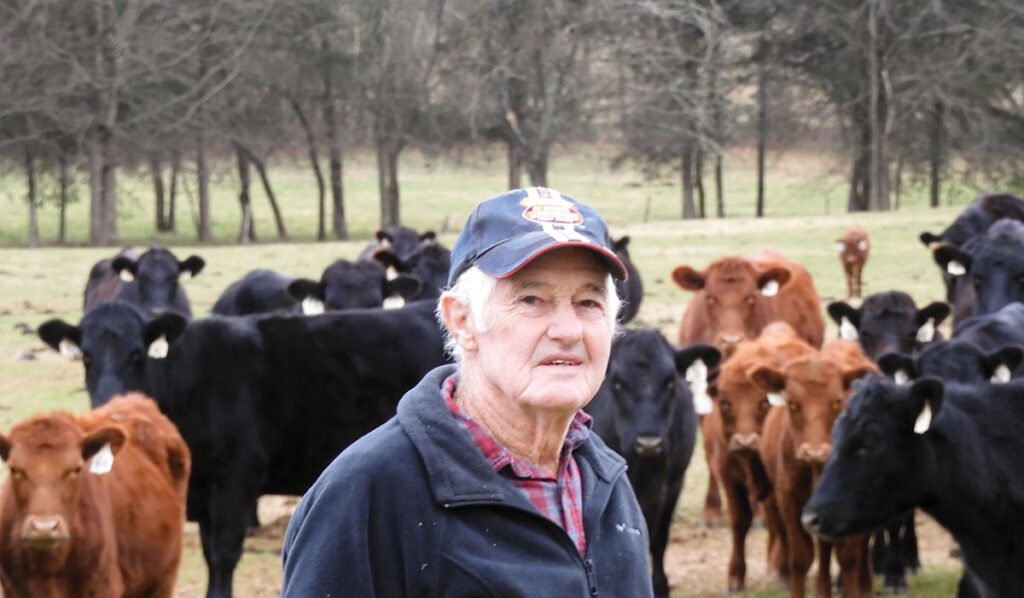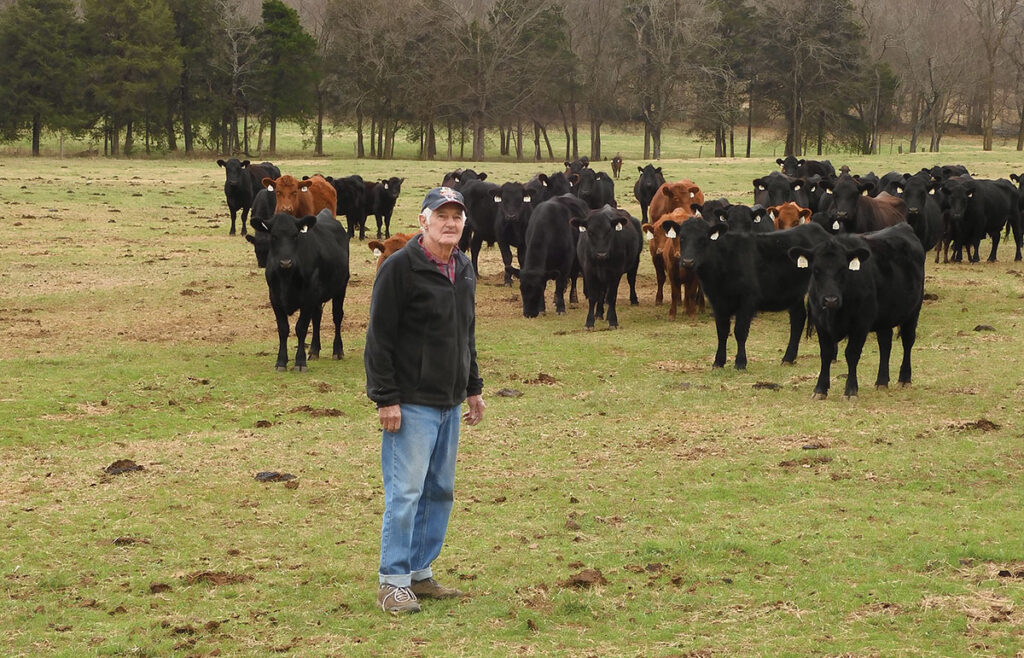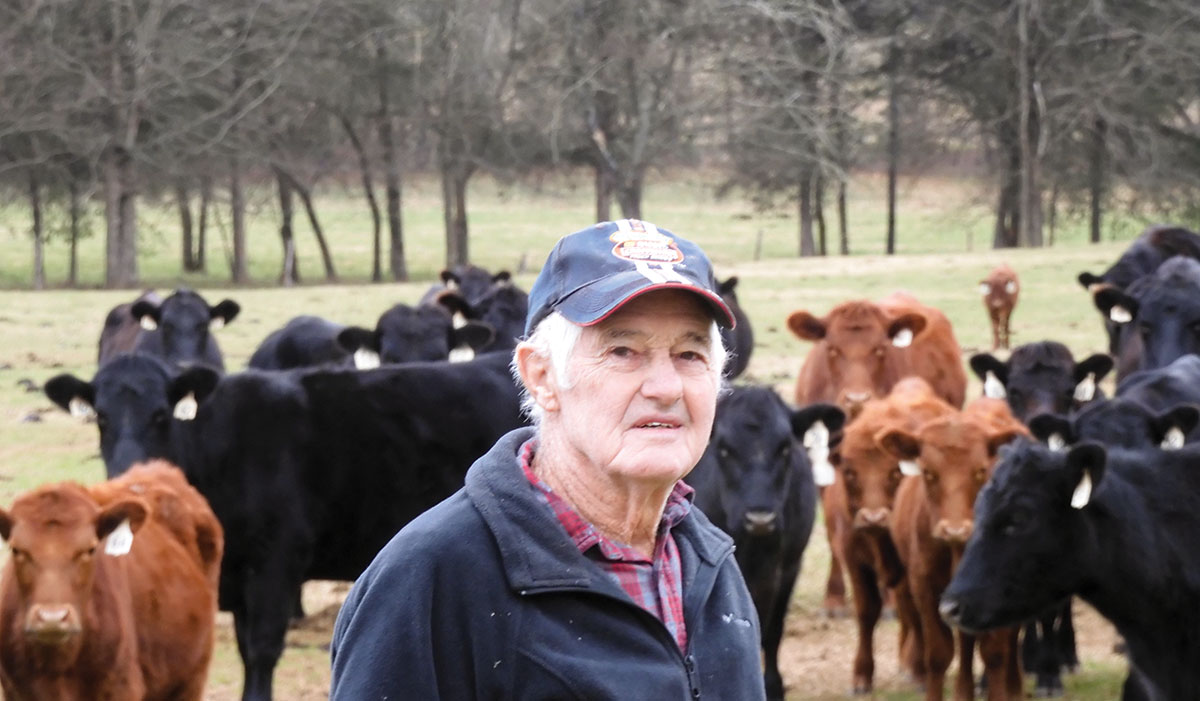
Jim Craven said he had no intention to become a cattleman
CANE HILL, ARK. – Jim Craven was born in and raised in Akron, Ohio, in 1936. He served in the Marine Corps and was deployed during the Korean War as a machine gunner. Then he moved to California and developed a plumbing business. In 1990, while in his 50s, he purchased 100 acres in Cane Hill, Ark., a place he had frequently visited.
“I was ready to leave the hustle and bustle of California life and had no idea I was going to be raising cattle,” Jim said.
Jim loved his acreage and wanted to build a house. The first step was to clear land. He did it by himself with a chainsaw and has cleared almost all 100 acres. That first year was an especially good one because he met his wife Sylvia and married her not that long thereafter.
The Craven acreage is a secluded spot in a small valley that contains a fenced-off creek and a wet water creek as well as three hand dug wells that serviced a stagecoach line many years ago.
In spite Jim being a city boy and no association with agriculture, he was and is an avid reader with books crowding his office and a large loft storage area in his garage.
“God led me to cattle, something I never even considered through the years.”
— Jim Craven
When Bermudagrass started growing as he cleared the land, he wanted to use it. He had read Bermuda was not enough to raise healthy animals, so he over seeded with a mixture that included fescue and native grasses, initially as pasture for sheep. As the years passed, Jim thought about the isolated nature of his land, his abundant supply of clean water and what might be less labor intensive than sheep if the operation could be handled efficiently and productively. He settled on the idea of a cow/calf operation with his first purchase was 13 cows and a bull he purchased from a neighbor. Because neighbor happened to have commercial Angus, Jim’s herd is Angus, now with 100 cows and two bulls.
“God is the center of everything and the most important, nothing else comes even close,” Sylvia said.
Jim nodded his head in agreement and added, “God led me to cattle, something I never even considered through the years.”
Isolation is a key factor in the Craven operation. The grass grows well and is not influenced by neighboring fields. Though Jim initially sprayed for weeds, the grasses soon crowded most weeds, with the remaining ones being very edible and a higher source of protein. He no longer sprays for weeds or fertilizes the land because the cattle do that for him. Additionally, he has a productive hayfield that usually supplies all of his hay needs.
The farm’s isolation also provides seclusion for their closed herd. All animals vaccinated only once in their lifetime and are treated for flies only through mineral supplementation, the only supplementation the herd receives. For best results, the mineral is changed seasonally.
In the beginning, Jim had some calves die within 10 days. Mystified, he had a calf autopsied and discovered E. coli was the cause. Immediately, every calf is vaccinated on the day of its birth with an E. coli vaccine, one for black leg and another for IBR. Even though the bulls stay with the cows all year round, his herd typically comes into heat in the spring with occasional calves born out of season. Regardless, fewer vaccinations makes vaccinating a less time-consuming and simpler process. Additionally, Jim very rarely pulls a calf and seldom needs a veterinarian. When he does, it is most typically for the occasional foot problem.
“I learned almost everything I do with my cattle from books,” Jim said. “The first thing I learned was the key to a productive, healthy herd was good grass and clean water. I developed the pastures and use the hand dug wells to fill accessible water tanks.”

What evolved was an efficient system based upon grass fed beef. While Jim belongs to no official organization, he reads many magazines as well as books and follows those best practices of grass feeding cattle that meet his system needs. The goal is to raise all grass-fed beef with minor intervention in order to produce the most natural beef possible for individual consumers. The system has no need to gather and transport calves to a sale barn because all are sold on the hoof and taken to Rice Custom Meat Processing in nearby Rudy. The buyer customizes processing according to individual preferences. Though Jim and Sylvia have never advertised, a robust niche market of individual customers ranges from the Missouri border through Arkansas and into Oklahoma, as far as Tulsa.
This system works perfectly for the 80-plus-year-old couple. Since Jim lavishes the herd with individual attention, it is very gentle and Jim is safe. Importantly, the workload is reasonable. He doesn’t spray for weeds or flies, uses a minimal but successful vaccination program and allows the mothers to wean naturally. When calves finish out at 950 pounds or better, he sells them to individual customers thereby avoiding the sale barn gathering and hauling routine.
Finally, Sylvia keeps the books and records.
Jim and Sylvia’s methods suit their small valley providing them and their beloved cattle good and happy lives.







